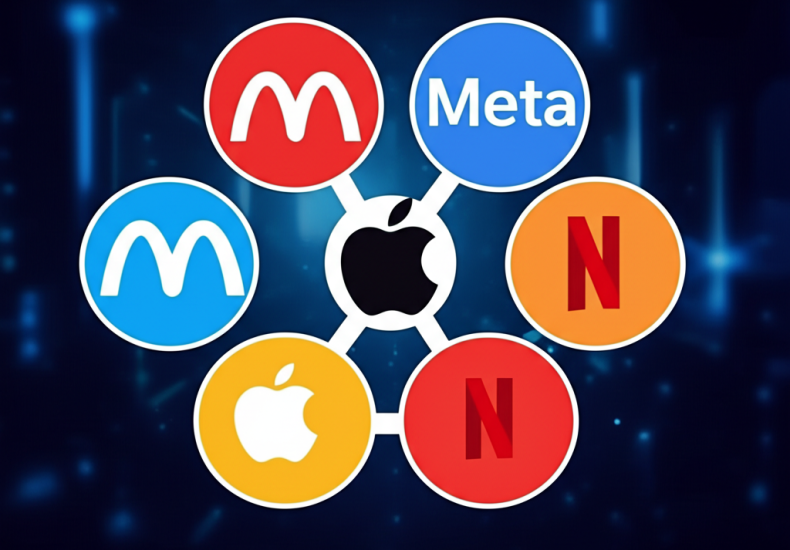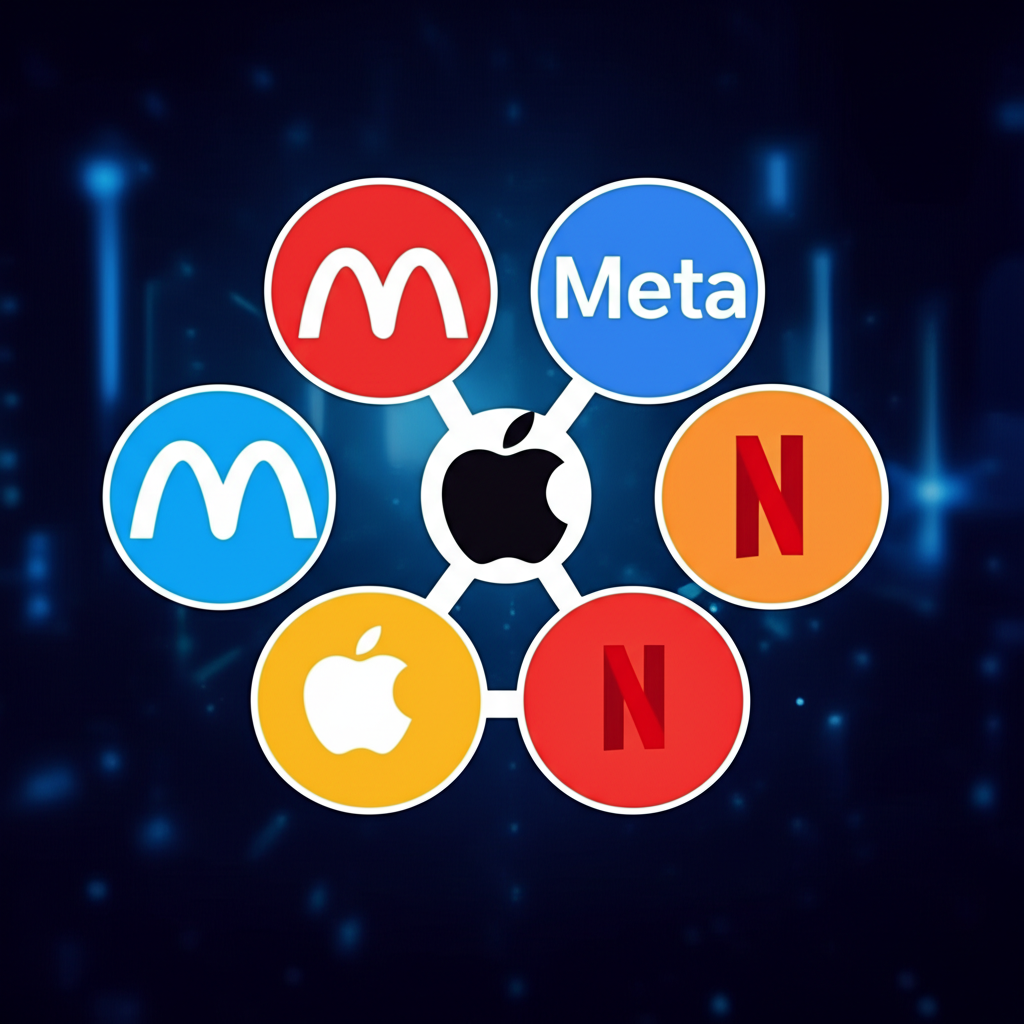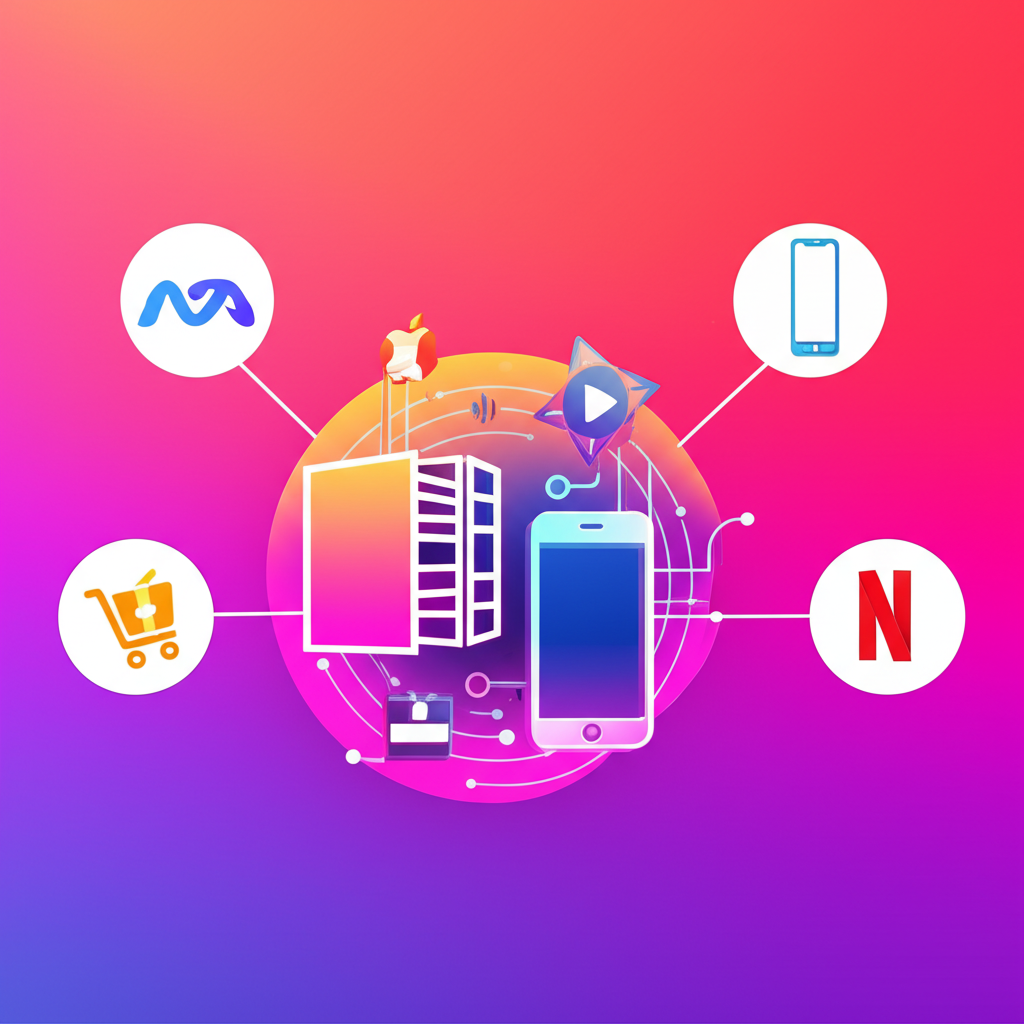
FAANG Companies: What Are They & Why Do They Dominate the Tech World?
Table of Contents
ToggleUnderstanding the FAANG Phenomenon

In the world of technology and finance, few terms carry as much weight as FAANG. This grouping—comprising Meta (formerly Facebook), Amazon, Apple, Netflix, and Google (under its parent company Alphabet)—has come to represent not just a set of stocks, but a transformative force in the digital age. These companies have reshaped entire industries, redefined consumer expectations, and become central players in global economic movements. Their combined influence extends into nearly every corner of modern life, from how we communicate and shop to how we entertain ourselves and access information. As pioneers of innovation and scale, they’ve set benchmarks for growth, profitability, and market resilience. This article dives deep into what FAANG truly means today, exploring their origins, impact on markets and society, investment dynamics, career opportunities, and how they continue to evolve amid shifting technological and regulatory landscapes.
What Are FAANG Companies? A Closer Look

The term FAANG refers to five American technology powerhouses that have come to dominate the digital economy. Originally coined in 2013 by CNBC commentator Jim Cramer, the acronym emerged during a period when these firms were delivering outsized returns and capturing investor attention like no others. What unites them is more than just size—they share traits like massive user bases, data-driven business models, global scalability, and the ability to continuously innovate across multiple domains. Each has built ecosystems that lock in users and generate recurring revenue, making them resilient even in volatile markets. Over time, FAANG has become shorthand for elite performance, technological leadership, and the promise of long-term growth in the stock market.
Breaking Down the FAANG Acronym
Each letter stands for a company that has not only achieved market dominance but also fundamentally altered its industry:
- Meta (formerly Facebook): Once known primarily for its social networking platform, Meta has broadened its vision with a strategic shift toward the metaverse. It owns a suite of globally dominant apps—Facebook, Instagram, and WhatsApp—that connect over three billion people monthly. Its investments in virtual and augmented reality through Oculus signal an ambition to lead the next wave of digital interaction, where physical and virtual worlds converge.
- Amazon: Starting as an online bookstore, Amazon has grown into a retail and technology behemoth. Its e-commerce platform reaches customers in dozens of countries, while its cloud computing arm, AWS, powers much of the internet, serving startups, enterprises, and government agencies. Beyond infrastructure, Amazon has made deep inroads into streaming media, artificial intelligence with Alexa, and logistics, creating a vertically integrated empire that few can match.
- Apple: Synonymous with design excellence and brand loyalty, Apple has built one of the most valuable ecosystems in the world. From the iPhone to the Mac, Apple Watch, and AirPods, its hardware is seamlessly integrated with software and services like the App Store, iCloud, Apple Music, and Apple Pay. This closed-loop system enhances user experience while driving high-margin recurring revenue, making Apple a model of sustainable profitability and customer retention.
- Netflix: A trailblazer in digital entertainment, Netflix disrupted traditional TV by pioneering subscription-based streaming. By investing heavily in original content—from global hits like “Stranger Things” to award-winning documentaries—it turned itself into a cultural force. Its data-driven approach to content creation and personalized recommendations has set the standard for on-demand media, influencing how the entire industry operates.
- Google (Alphabet): At the heart of the internet for most users, Google dominates search, online advertising, and mobile operating systems with Android. Under the Alphabet umbrella, it also pursues ambitious “moonshot” projects, including autonomous vehicles through Waymo, life sciences research via Calico, and quantum computing. Its free services—Search, Gmail, YouTube, Maps—have become essential tools, giving it unparalleled access to user behavior and data.
The Origins of the FAANG Grouping
The rise of FAANG as a collective identity wasn’t accidental. In the early 2010s, these companies began showing explosive growth, fueled by the proliferation of smartphones, broadband access, and cloud infrastructure. Their business models leveraged network effects—where the value of a service increases as more people use it—allowing them to scale quickly and dominate their niches. Investors recognized that these weren’t just tech stocks; they were platforms shaping the future of commerce, communication, and content. As their market caps surged, they began to account for a growing share of major indices like the S&P 500 and Nasdaq, making their performance a key driver of overall market trends. The term FAANG captured both their financial clout and their cultural significance.
Market Power and Global Influence

FAANG companies are not just large—they are structurally important to the global economy. With combined market capitalizations often exceeding $7 trillion, their stock movements can sway entire markets. A single earnings report from Apple or Amazon can trigger volatility across sectors. Their weight in the Nasdaq Composite, sometimes accounting for over 20%, means that index performance is heavily influenced by their fortunes. They’ve become bellwethers not only for the tech sector but for investor sentiment at large.
Shaping Innovation and Consumer Habits
These firms don’t merely respond to market trends—they create them. Amazon’s same-day delivery expectations have redefined logistics standards. Apple’s App Store launched an entire economy of mobile developers. Google’s search algorithms determine what information reaches billions. Netflix’s binge-watching model changed how stories are told. Their R&D budgets rival those of nations, funding breakthroughs in artificial intelligence, chip design, robotics, and energy efficiency. Products once considered futuristic—like smart speakers or cloud-based collaboration tools—are now everyday staples, thanks to their widespread adoption.
Why Investors Flocked to FAANG Stocks
For over a decade, FAANG stocks were the cornerstone of growth investing. Between 2010 and 2020, the original FANG group delivered average annual returns of around 30%, far outpacing the broader market, according to Investopedia. Their appeal was multifaceted: dominant market positions with strong moats, consistent revenue expansion, high profit margins, and visionary leadership. Unlike many startups chasing hype, these companies demonstrated the ability to scale globally while maintaining innovation. Their massive cash reserves also allowed for strategic acquisitions—like Facebook buying Instagram or Google acquiring YouTube—further cementing their reach. For many investors, owning FAANG shares wasn’t just about financial gain; it was a bet on the future of digital life.
How FAANG Has Evolved: From FANG to MAANG and Beyond

The tech landscape never stands still, and neither does the language used to describe its leaders. The original FANG (Facebook, Amazon, Netflix, Google) was expanded to FAANG with Apple’s inclusion, recognizing its resurgence under Tim Cook and its transformation from a hardware company into a services powerhouse. But as the market evolved, so did the need for more accurate groupings.
FAAMG: The Case for Microsoft
One of the most notable shifts was the rise of FAAMG—replacing the second “A” (Apple) with Microsoft. This change reflects Microsoft’s remarkable turnaround under CEO Satya Nadella. Once seen as a legacy player, Microsoft revitalized itself through Azure, its cloud computing platform, which now competes directly with AWS. Its strength in enterprise software, productivity tools like Microsoft 365, and growing AI integrations have made it a critical player in business technology. Given its market cap and influence, many argue that Microsoft’s absence from the original FAANG list was more historical than logical.
MAANG and the Rise of New Labels
Another update came in 2021 when Facebook rebranded to Meta. This shift signaled a strategic pivot toward immersive digital experiences, particularly the metaverse. As a result, the acronym evolved into MAANG—Meta, Apple, Amazon, Netflix, Google—better reflecting the current corporate identities. Other terms, like MAMAA (Meta, Apple, Microsoft, Amazon, Alphabet) and the “Magnificent Seven” (which includes NVIDIA and Tesla), have gained traction to capture the broader set of tech leaders shaping the next decade. These evolving labels show that while the name may change, the underlying theme remains: identifying the most powerful forces in technology and capital markets.
Investing in FAANG: Rewards and Risks
While FAANG stocks have delivered extraordinary returns, they are no longer the low-risk growth engines they once were. As they mature, new challenges have emerged.
Historical Growth and Changing Dynamics
Their past performance remains impressive. Amazon’s stock, for instance, grew over 3,000% in the decade following 2010, driven by e-commerce expansion and AWS’s profitability. Apple became the first U.S. company to reach a $3 trillion market cap. But as these companies grow larger, sustaining double-digit growth becomes harder. Market saturation, regulatory pressure, and macroeconomic shifts mean that future returns may not mirror the past.
Key Risks Facing FAANG Investors
- Valuation Sensitivity: Many FAANG stocks trade at premium valuations based on future growth expectations. When interest rates rise or growth slows, these stocks can experience sharp corrections—as seen in 2022 when tech valuations contracted significantly.
- Regulatory Pressure: Governments worldwide are scrutinizing these companies for antitrust violations, data privacy issues, and anti-competitive practices. The European Union’s Digital Markets Act and ongoing U.S. lawsuits against Google and Amazon highlight the legal risks that could force structural changes or limit expansion.
- Competition and Disruption: Despite their size, FAANG firms face threats from agile startups and specialized players. In AI, for example, companies like OpenAI and NVIDIA have taken early leads, shifting investor attention. Similarly, TikTok has challenged Meta in social engagement, particularly among younger users.
- Economic Vulnerability: As major players in digital advertising (Google, Meta) and consumer spending (Amazon, Apple), they are sensitive to economic downturns. A drop in ad budgets or consumer purchases can quickly impact their revenue.
- Technological Shifts: Even innovators can be disrupted. The next major platform—be it AI agents, decentralized networks, or spatial computing—could reshape power dynamics in ways that favor new entrants.
Working at FAANG: The Career Perspective
Beyond the stock market, FAANG companies are elite destinations for professionals. Landing a job at one is often seen as a career accelerator, opening doors to future opportunities in tech, startups, or venture capital.
Why Top Talent Chooses FAANG
The appeal is clear: competitive salaries, stock-based compensation, comprehensive benefits, and access to cutting-edge projects. Engineers work on systems that serve billions. Product managers shape features used worldwide. Designers influence user experiences across platforms. The scale of impact is unmatched. Online communities, including Reddit threads and Blind forums, frequently discuss the prestige and learning potential associated with FAANG roles, often citing rapid skill development and strong exit opportunities.
Reality Check: Culture and Challenges
Despite the perks, the work environment can be intense. Long hours, high expectations, and internal competition are common. The hiring process is notoriously rigorous, with multiple technical interviews, coding challenges, and behavioral assessments designed to filter top performers. Once inside, employees must adapt to fast-moving priorities, especially as these companies pivot into new areas like AI and the metaverse. While the rewards are significant, the pressure to perform can be relentless. Still, for many, the chance to work on transformative technology with some of the brightest minds in the industry makes the trade-off worthwhile.
Are FAANG Companies Still Relevant Today?
The question isn’t whether FAANG shaped the past two decades—it’s whether they will define the next. While their influence remains vast, the ground is shifting.
New Competitors and Shifting Priorities
The rise of artificial intelligence has introduced a new class of leaders. NVIDIA, with its GPUs powering AI training, has seen its market cap soar, rivaling traditional tech giants. Startups like Anthropic and Mistral AI are pushing the boundaries of large language models. In biotech and clean energy, new innovators are emerging outside the digital realm. Meanwhile, Web3 and blockchain technologies suggest alternative models for ownership and data control, challenging the centralized platforms that FAANG represents. While these giants are investing heavily in AI—Google with Gemini, Microsoft with OpenAI integration, Meta with open-source models—the pace of change means leadership is no longer guaranteed.
Societal and Regulatory Pressures
Their size has made them targets. Concerns about misinformation, algorithmic bias, mental health impacts from social media, and labor practices in warehouses and data centers have fueled public debate. Regulators in the U.S., EU, and elsewhere are imposing stricter rules on data handling, mergers, and market conduct. The European Commission, for example, has launched multiple antitrust investigations into Google, Apple, and Amazon. These actions could limit their ability to acquire startups, bundle services, or leverage user data—core elements of their business models. How they navigate this new era of accountability will be critical to their long-term success.
Conclusion: The Legacy and Future of FAANG
FAANG companies have left an indelible mark on the modern world. They’ve driven technological progress, created trillions in wealth, and redefined how people live and work. While the acronym may have started as a financial shorthand, it has grown into a symbol of innovation, scale, and disruption. Though the names and groupings evolve—FAANG, MAANG, the Magnificent Seven—the core idea persists: a small set of companies wielding outsized influence over markets and society. As they face new challenges from regulation, competition, and technological change, their ability to adapt will determine whether they remain leaders or become the incumbents of tomorrow. For investors, employees, and consumers alike, the story of FAANG is far from over—it’s entering a new chapter.
What does FAANG stand for, and which companies are included?
FAANG stands for Facebook (now Meta Platforms), Amazon, Apple, Netflix, and Google (now Alphabet). It represents five of the largest and most influential technology companies in the U.S. stock market.
Why is Microsoft often considered alongside FAANG companies, even if not in the original acronym?
Microsoft is often included in extended acronyms like FAAMG because of its immense market capitalization, consistent innovation, and its dominant position in cloud computing (Azure) and enterprise software, making it a comparable tech powerhouse.
Has the term FAANG become obsolete in the current market landscape?
While the original FAANG term is still recognized, it has largely evolved. Newer acronyms like MAANG (Meta, Apple, Amazon, Netflix, Google/Alphabet) or the “Magnificent Seven” are more current, reflecting corporate rebrands (like Meta) and the inclusion of other significant tech companies like Microsoft and NVIDIA.
What are the primary differences between FAANG, FANG, FAAMG, and MAANG?
- **FANG:** The original acronym (Facebook, Amazon, Netflix, Google).
- **FAANG:** Adds Apple to the FANG group.
- **FAAMG:** Adds Microsoft to the FAANG group.
- **MAANG:** Updates FAANG by replacing Facebook with Meta Platforms.
What makes FAANG companies so influential in the global economy and stock market?
Their influence stems from massive market capitalizations, continuous innovation in critical tech sectors (AI, cloud, e-commerce), global user bases, and their ability to shape consumer behavior and drive market trends. Their performance often impacts major stock indices.
What are the main investment opportunities and risks associated with FAANG stocks?
Opportunities include strong historical growth, market leadership, and continuous innovation. Risks involve high valuations, increasing regulatory scrutiny (antitrust concerns), intense competition, and potential market saturation.
What kind of career opportunities can one find at FAANG companies, and what is the culture like?
FAANG companies offer diverse roles in engineering, product management, design, sales, marketing, and more. They attract top talent with high compensation, innovative projects, and significant career growth. The culture is often fast-paced, demanding, and highly competitive, with rigorous interview processes.
Which FAANG companies are headquartered in the United States?
All the original FAANG companies (Meta Platforms, Amazon, Apple, Netflix, and Google/Alphabet) are headquartered in the United States.
Why is Netflix specifically included in FAANG, given its narrower focus compared to others?
Netflix was included due to its pioneering role in streaming, its rapid global subscriber growth, and its transformative impact on the entertainment industry, which made it a significant growth stock and market disruptor at the time the acronym was coined.
What are the top 5 FAANG companies by market capitalization today?
While market capitalizations fluctuate daily, typically Apple and Alphabet (Google) are consistently among the top, followed closely by Amazon and Meta Platforms. Netflix, while still large, usually has a lower market cap compared to the other four.
You may also like
Calendar
| 一 | 二 | 三 | 四 | 五 | 六 | 日 |
|---|---|---|---|---|---|---|
| 1 | 2 | 3 | 4 | 5 | 6 | 7 |
| 8 | 9 | 10 | 11 | 12 | 13 | 14 |
| 15 | 16 | 17 | 18 | 19 | 20 | 21 |
| 22 | 23 | 24 | 25 | 26 | 27 | 28 |
| 29 | 30 | 31 | ||||
發佈留言
很抱歉,必須登入網站才能發佈留言。